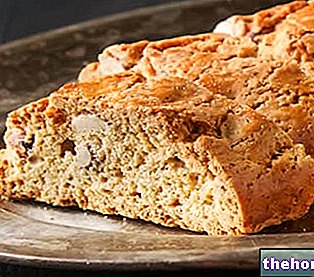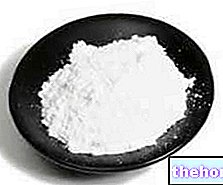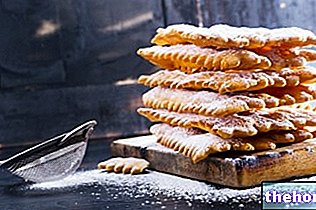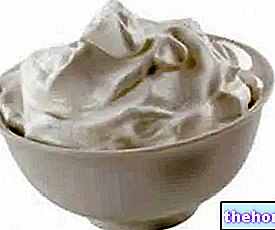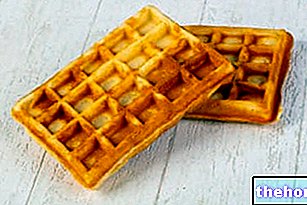S.L.N.G in Ice Cream (Non-Fat Milk Solids)
This category includes all that remains of the milk after removing fat and water, that is proteins, lactose and mineral salts, and the skimmed milk powder constitutes its parent ingredient.

Deepening: how to calculate the percentage of S.L.N.G.?
The quantity of S.L.N.G. in a mixture it can vary according to the type of ice cream you want to obtain.
Through a mathematical formula it is possible to calculate the percentage of S.L.N.G. in a mixture:
[100- (Sugars% + Fats% + Other Solids%)] x 0.15
In this formula, 0.15 is considered a fixed number, and takes into account the non-fat milk solids (expressed in lactose) contained in a mixture.
For a correct balance, we must consider that:
- The quantity of skimmed milk powder should not exceed 11-12% of the total weight of the mixture
- 100 g of skimmed milk powder provides about 50 g of lactose: in addition to this value, there is the risk of obtaining an excessively sandy ice cream due to the formation of lactose crystals.
To avoid problems of "sandiness" this formula was devised, which originates from the following reasoning: "i S.L.N.G. they are able to absorb water in quantities equal to 6-7 times their weight"In other words, 15 g of skimmed milk powder can absorb about 100 g of water: this ratio is expressed with the figure 0.15.
What is obtained from the formula is precisely the percentage of S.L.N.G. which can be used in the mixture.
Example. An ice cream provides:
- 15% sugar
- 6% fat
- 3% other solids
I S.L.N.G. they are calculated like this: [100- (15 + 6 + 3)] x0.15 = 11.4
Considering that the general rule imposes a quantity of S.L.N.G. between 9 and 12%, the value 11.4 is ideal for a correct balance of the mixture.
Dry Ice Cream Residue (Other Solids)
It expresses everything that cannot be considered sugar, fat, S.L.N.G. or water. This category includes substances capable of acting as stabilizers, thickeners and emulsifiers, ie all those ingredients capable of increasing the resistance to melting of the ice cream, of binding to water and of swelling.
The main substances that fall into this category are:
- carob seed flour
- sodium alginate
- guar gum
This category also includes lean solids present in flavoring pastes (eg in cocoa, hazelnut, etc.) and non-sugary fruit solids.
Deepening: carob flour in ice cream
Carob seed flour is a hydrocolloidal polysaccharide extracted from the pod of the carob: it is probably the most common ingredient as a component of thickeners and stabilizers for ice cream.
Carob seed flour disperses well both hot and cold, and its cold dispersion does not cause problems because it does not form lumps. However, to fully exercise its thickening capacity, carob seed flour requires high temperatures: in this regard, for an "excellent solubilization, it is recommended to bring the mixture to 80 ° C, and to maintain the temperature for at least 2 minutes. .
Carob seed flour is used alone in concentrations equal to 0.5-1% or together with other thickeners, such as guar gum and mono / di glycerides of fatty acids (eg Aglumix ®).
The quantity of stabilizer contained in an ice cream mix must not exceed 0.5-1%. However, emulsifiers and stabilizers are not so indispensable in "fruit-based" ice creams (sorbets), ie in all blends that do not require the addition of fats, formulated only with water, sugar and pulp / fruit juice.
Soy lecithin and mono / di glycerides of fatty acids are also included in this category: these emulsifiers are mostly used in the preparation of industrial ice creams (which require long storage times). The function of the emulsifiers is to bind the fat particles to the water molecules contained in the mixture, to increase the conservation of the ice cream, to prevent the formation of ice crystals and to optimize the structural characteristics (eg viscosity) of the finished product.
Even inulin can be used for the formulation of ice cream. It is a soluble fiber, indigestible by the human body, made up of long chains of fructose. In the mixes for ice cream, inulin shows a similar behavior, in some ways, to sugars: in fact it helps to lower the freezing point of the water contained in the mix, enhancing the anti-freezing capacity of some sugars such as, for example, dextrose. Furthermore, being made up of long chains of fructose, inulin contributes - even if very little - to sweeten the mixture: in fact it has a sweetening power equal to about 10% compared to that of sucrose. Again, in ice creams, this soluble fiber is also used as a "body compensator" (ie to increase the fixed residue) in all mixtures lacking in total solids (eg in fruit ice creams and sorbets). Inulin is often used in fruit sorbets as a percentage of " 1-2% of the weight of the mixture. When used in dosages higher than 2%, inulin seems to act as a sort of "fat substitute": in fact, it is able to give a pasty and creamy structure (just like a fat substance), without however negatively affecting the total calories (inulin provides 1Kcal / g against the 9Kcal / g of fat). tastes and pasty to ice cream, similar to that made by fatty substances.
The presence of inulin in a mixture makes ice cream "functional": in fact, this important fiber has positive effects on intestinal transit, helps to lower the levels of "bad" cholesterol and triglycerides in the blood and optimizes the composition of the flora intestinal.
In summary, stabilizers are chosen for:
- Facilitate the absorption of air during the freezing of the mixture (to favor the overrun)
- Inhibit the formation of ice crystals in the finished product
- Improve the texture of the ice cream
- Stabilize the emulsions
- Enhance the aroma of the ice cream
Other articles on "Artisan Ice Cream - Non-Fat Solids and Dry Residue"
- Fats in Ice Cream
- Ice-cream
- Sugar in Ice Cream
- Types of Ice Cream
- Preparation of the Gelato - Balancing the mixture
- Preparation of Ice Cream - Pasteurization, Maturation, Creaming
- Making homemade ice cream
- Calories of ice cream

